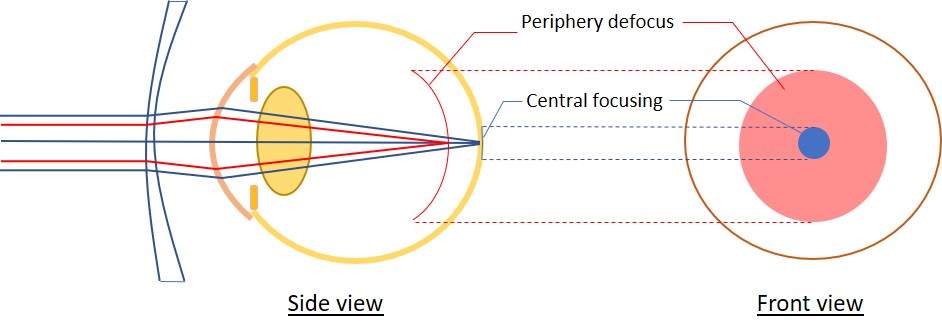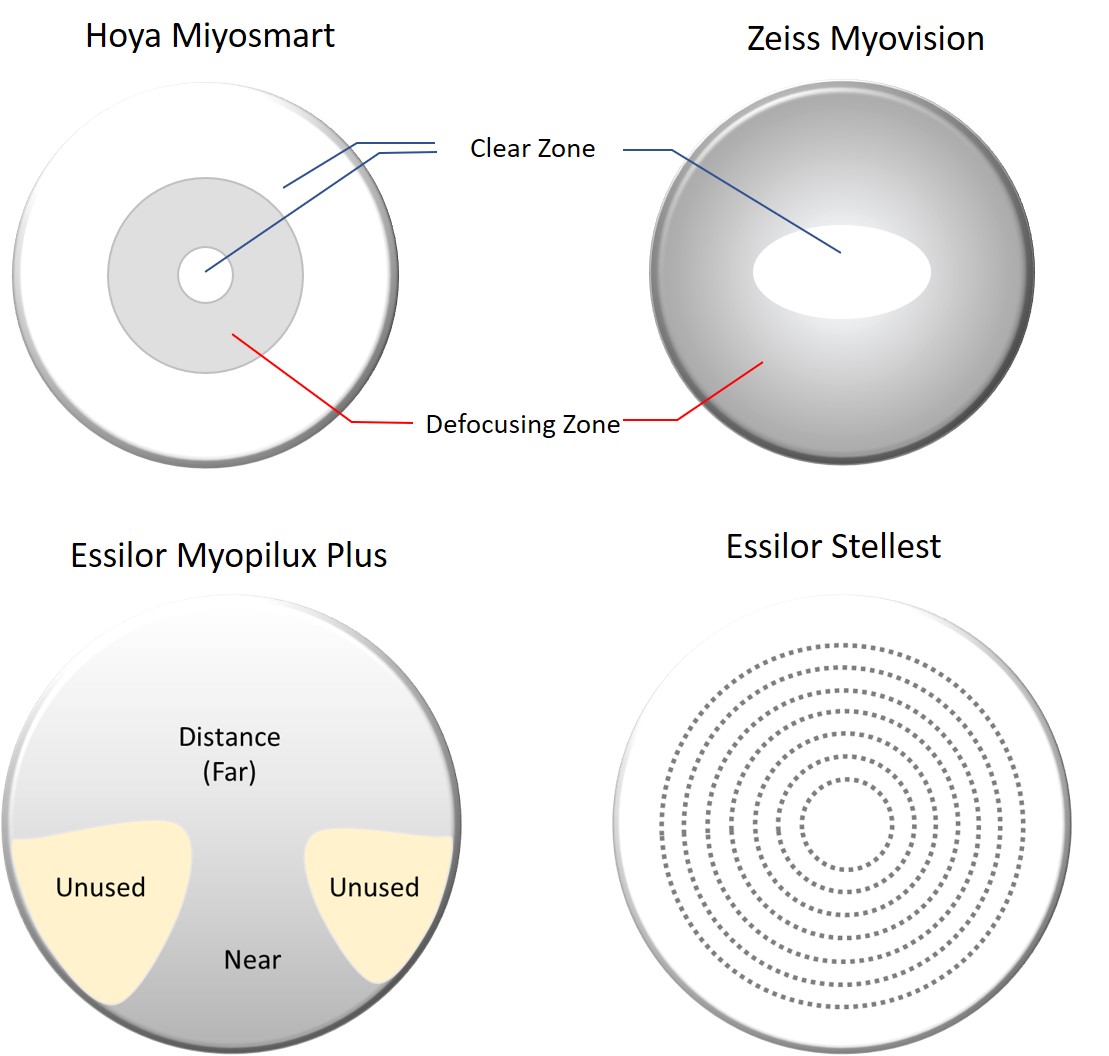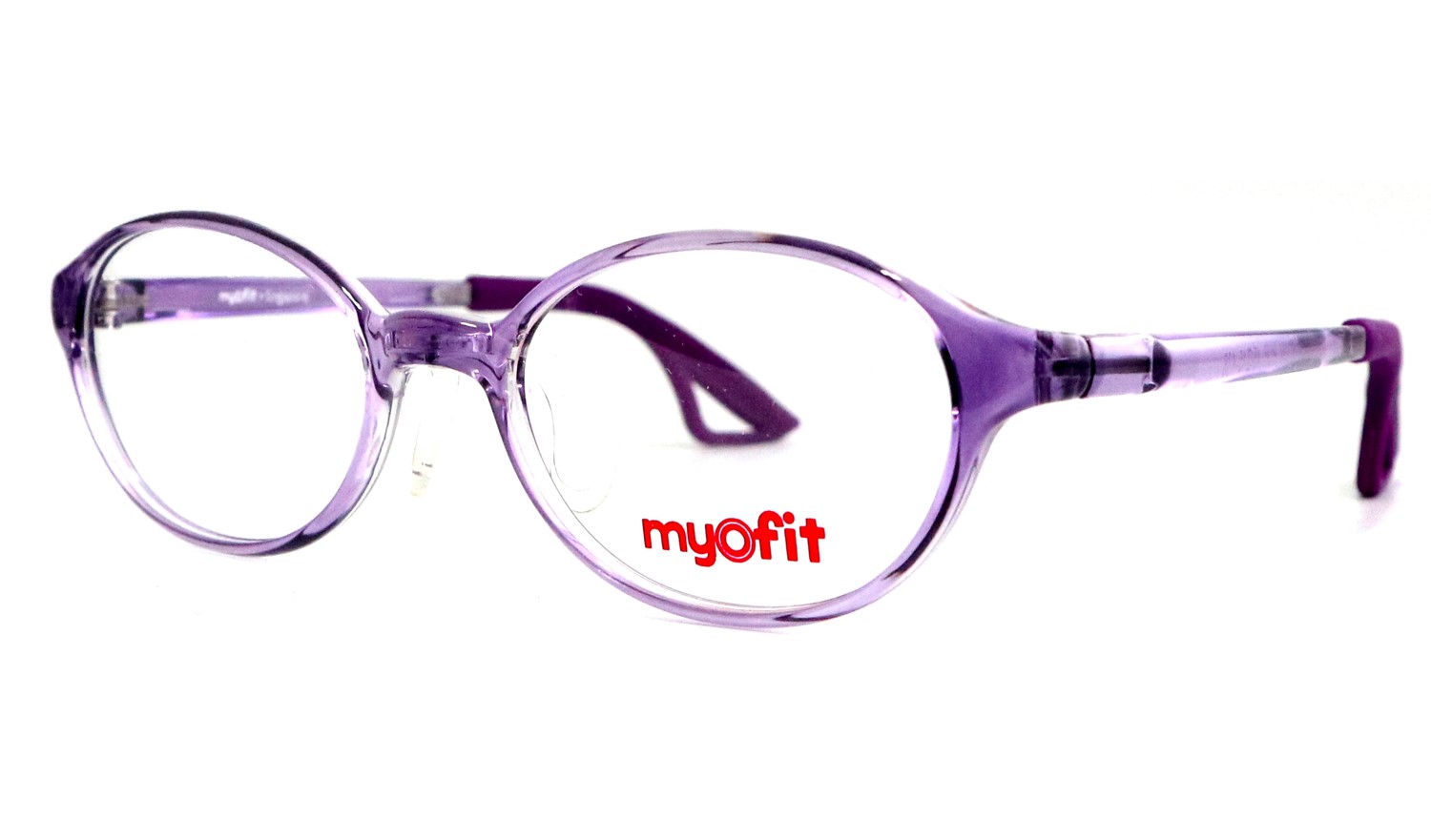Blog | Myofit frames for Myopia Control Lenses. Why it Matters.
Using eyeglasses to control myopia progression is the safest and least invasive method. With research in myopia progression, major lens companies like Hoya, Essilor and Zeiss have introduced their version of myopia control lenses with clinical results to substantiate their claim. In practice, the results from eyeglasses fitted with myopia control lenses varies greatly [Huang et al 2016]. There are several factors that contributed to this inconsistent results. Factors such as the child's glasses wearing habit, amount of time spent indoors and outdoors, size of lens and frame slipping may all play a part in determining myopia progression.
Research in myopia progression has resulted in different strategies and lens design to manage it. Major brands like Essilor, Hoya and Zeiss each have their own myopia control lens design. Zeiss is one of the earliest major lens brand to introduce a lens that uses peripheral defocus for myopia management with the trade name MyoVision. This works on the hypothesis that an image projected in front of the retina, around the periphery of the fovea will slow eye axial elongation [Bowrey et al 2017].
Hoya introduced the MiyoSmart lens in 2019 which also uses the concept of peripheral defocus but with a different lens design. Their clinical trial results showed that the lens was able to slow myopia progression by an average of 60% [Lam et al 2020]. Essilor with their Myopilux lens, uses the concept of progressive addition lens (PAL) design where the addition power zone is located at the lower half of the lens for greater eye relaxation during near distance work. In 2020, they launch their Stellest lens which features several tiny micro-lens surrounding a clear central zone which is also based on the general concept of peripheral defocus.
 Fig 1. Author's illustration of peripheral defocus by Hoya Miyosmart. |
 Fig 2. Myopia control lens design from the major lens companies. Miyosmart source [Hoya MiYOSMART by Evershine Optical], Zeiss MyoVision and Essilor Myopilux Plus source [Best Myopia Control Methods for your child], Essilor Stellest source [Sixth Tone News |
To cater for aesthetic preference of eyeglass users, there are a wide selection of frame shapes to choose from. However, not all the frame shapes are suitable for myopia control lens. Generally, narrow shape frames are not recommended as the height of the lens fitted into it may not be able to accommodate the different power zones built into the lens. The design of myopia control lens will also determine the frame shapes that are most suitable for it.
In terms of myopia control lens design, the most apparent difference in the treatment zone layout is between the progressive addition lens (PAL) design and the peripheral defocus design. In the PAL design, the different power zone was arranged linearly, from top to bottom. However in the peripheral defocus design, the treatment power zone is arranged in a concentric band(s) around a centre clear zone. Figure 3 below showed the common frame shapes and their accommodation towards the treatment zones of the lens.
For lens with treatment power zones that are arranged in concentric band(s), a frame with a more circular shape would be more compatible. For PAL design, the depth of the lens from the eye position to the base of lens would influence the length of the corridor for the addition power. The brands offering myopia control lens will typically give recommendations for frame sizes that meet its minimum requirement. However, meeting the minimum requirement does not mean the optimal size. With this in mind, Myofit frames are designed to meet the optimal requirement of each myopia control lens it is recommended for. A fundamental requirement for Myofit frames is that it ensures that much of the treatment zones built into the lens are comfortably accommodated within the frame.
 Fig 3. Illustration of MiyoSmart Myopia Control Lens fit on different frame shape. |
Frame slipping is a major concern for myopia control lens. A study by Hasebe et al (2005) showed that the near addition effect of PALs can be reduced by as much as 63% due to frame slippage. This is despite the children in the study using frames with silicone nosepad. Myopia control lens, as with any precision optics, requires a stable frame to ensure that the designated focusing zones on the lens are directed at the correct location on the retina.
For children in particular, they may not realize if the lens has moved out of position as their eye is able to accommodate any minor shift in the object focus. Since children are naturally more active and have less prominent nose bridge, there is also a greater likelihood that their frame slips down their nose. Frame slipping will certainly reduce the effectiveness of the myopia control lens.
Several brands of children frames have incorporated features to reduce frame slipping. The most common feature is to have a curly temple tip. The curly temple tip design was introduced many decades ago. However, it was not very popular as this design tends to squeeze the user's ears causing discomfort. Myofit frames use an anchor tip design to hold the glasses in place. A key difference in the anchor tip is that it is soft and gentle to the ears while providing support from the ears. This significantly reduces discomfort and encourages children to use the glasses throughout the day, Myofit frames also featured a rubberized nosepad to give the glasses greater support when looking forward.
 Fig 4. Myofit frame compatibility with MiyoSmart lens |
There has been significant advancement in the research and development of myopia control lens. Compared to other methods for myopia control such as ortho-K, contact lens and atropine eye drops, myopia control lens in eyeglasses is the least invasive method. Although clinical studies have shown that myopia control eyeglasses do effectively reduce myopia progression, its performance is not as good as the other methods. While it may be common sense that the performance of the myopia control eyeglasses will be compromised if the frame shape does not adequately accommodate the various focus zones on the lens and if the frame slips, there has been very little attention paid to it. With Myofit frames, we may see better results from the use of myopia control lens.
19 November 2020
Updated. -
Reference
- Bowrey H E, Zeng G, Tse D Y et al. The Effect of Spectacle Lenses Containing Peripheral Defocus on Refractive Error and Horizontal Eye Shape in the Guinea Pig. Invest Ophthalmol Vis Sci. 2017; 58: 2705. Link
- Hasebe S, Nakatsuka C, Hamasaki I, Ohtsuki H. Downward deviation of progressive addition lenses in a myopia control trial. Ophthal. Physiol. Opt. 2005 25: 310 Link
- Huang J, Wen D, Wang Q et al. Efficacy Comparison of 16 Interventions for Myopia Control in Children: A Network Meta-analysis. Ophthalmology 2016; 123: 697. Link
- Lam C S Y, Tang W C, Yse D Y Y. Defocus Incorporated Multiple Segments (DIMS) spectacle lenses slow myopia progression: a 2-year randomised clinical trial. Br J Ophthalmol 2020;104:363. Link
Read also
14 July 2018
26 July 2018
27 January 2018

